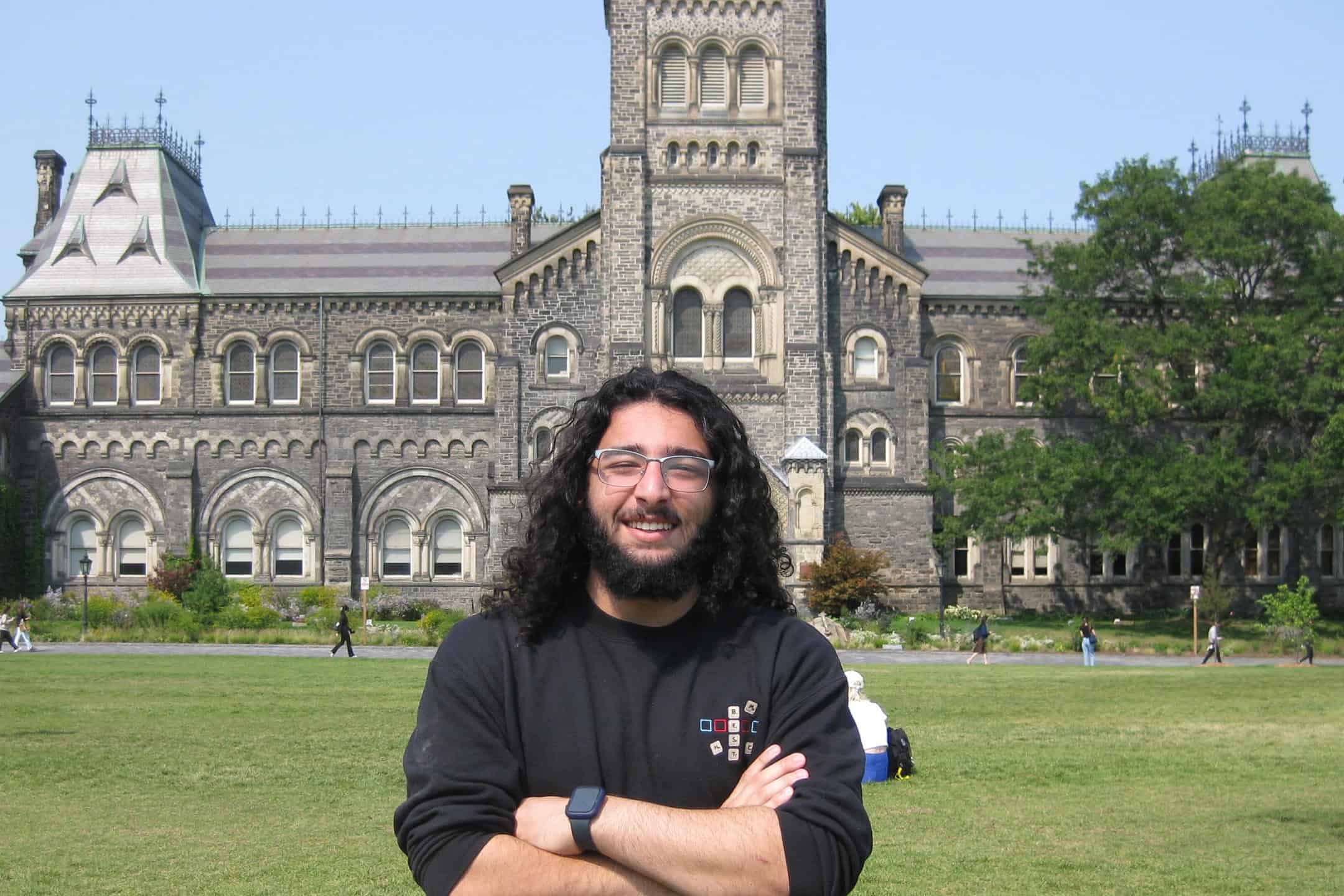Rafiq Omair is a third-year mechanical engineering student who has become a prominent figure within the UTSG engineering community. Having Palestinian roots and growing up around dozens of relatives in Jordan, Omair cites this cultural dynamic as a significant factor in his personal development. He had to be “loud” if he wanted to be heard by everyone — which eventually shaped his social and outgoing personality. Omair’s roots and personality pushed him to pursue research and eventually join an engineering lab at U of T.
The Varsity sat down with Omair to discuss his involvement with the Durable Repellent Engineering Advanced Materials (DREAM) Laboratory, his efforts to make undergraduate research more accessible, and the recognition he has received for his extracurricular involvement.
The Varsity: How did you first get involved with engineering research?
Rafiq Omair: I was very fortunate that I knew what I wanted coming into school. I knew that I wanted to go into research, so that allowed me to start reaching out to professors early to start getting in touch with people [and learn] about their work.
TV: What is your research focused on and who do you work with?
RO: I work with Professor Kevin Golovin from the Department of Mechanical & Industrial Engineering in the DREAM lab. My work is heavily focused on creating energy-efficient methods of de-icing systems for airplanes, wind turbines, and anything else which could be affected by ice accumulation at higher altitudes. We also research superhydrophobicity — the tendency a surface has to repel water, sweat, and other forms of de-icing — using materials or coatings that are slippery or do not require energy to de-ice.
[The DREAM lab] is the only lab at U of T that does heavy work with textiles, microplastics, and microfibre shedding. Washing synthetic fabrics causes friction, which releases microplastic sheddings into the washing water. These sheddings are environmental pollutants that take a long time to degrade. We design coatings to stop microplastics and microfibres from shedding, and we work on coatings that stop microplastic sheddings in general.
One of our research focuses is creating hydrophobic surfaces, which we use for companies such as Lululemon. We replace the materials that they’re currently using for their water-resistant jackets — which could harm the environment — and create new chemicals for newer coatings, which would tackle all the environmental problems that their current coatings offer.
TV: You’re a strong believer in making undergraduate research more accessible to students. What have you done to advance this goal?
RO: For most people, getting into school is more about taking the ‘normal’ engineering path. We see a lot of career fairs, which are mostly focused on industry jobs. Not as [many] people focus on research career paths, so I wanted to change that.
I was part of its organizing committee for the Undergraduate Engineering Research Day last year, and I was fortunate enough to be one of this year’s co-chairs where we had more than 150 presentations.
I’m [also] starting a new program that will help students match up with professors who will give them tips and general advice about how to approach conducting research as an undergraduate, [and to those] who [are] still unsure if that’s the kind of career [they] want to commit to.
TV: How did you manage to get so involved in the engineering community?
RO: It was honestly very similar to research: I narrowed down what I wanted to do or what I wanted to be involved in, and through that, I started reaching out [to supervisors]. I started with the bigger clubs, and if I liked [them] enough, I climbed my way up into [their] executive positions.
When I first received the email that I [won] the Engineering Society semi-centennial Leadership Award, I was surprised. I’m glad that I won it, but those awards have never really been my focus. I think the most fun that I have through these roles is when I get to work with the younger students. The mentorship and teaching aspects of being in academia [are] a huge part of why I want to break into it and why I want to stay in research.
This interview has been edited for length and clarity.



No comments to display.